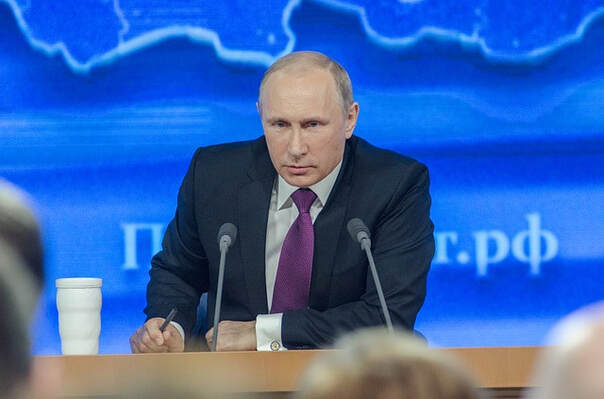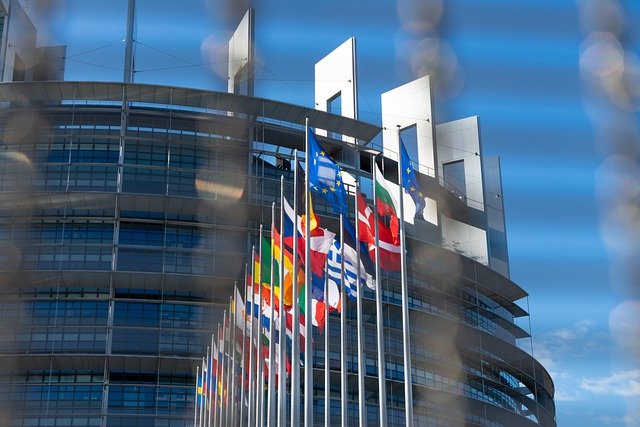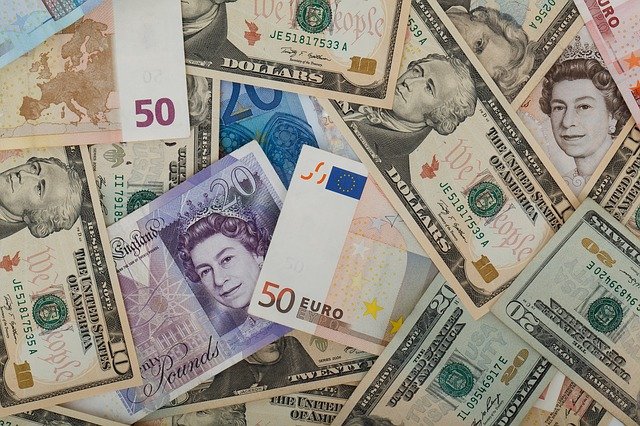
Latest developments since our last article
In the newsletter two weeks ago, we spoke about the historical and geopolitical context in which this latest conflict has taken place. Our base case was a de-escalation of the situation with some agreement being reached, concessions made and both sides being in a position to spin that they emerged “victorious”. Since then, events have evolved perhaps in a way we did not expect. Why?
For one, we did not expect the extent of the coordinated response from both the EU and the United States. The strong resistance that the Ukranian people continue to put up and the support that they have received globally. This does not necessarily translate into a direct confrontation between NATO and Russia but if Putin’s intentions were to counter NATO and create a proxy state which ensures that the EU does not encroach on his border, it may have backfired spectacularly. Not only has this incursion fostered increased support for the alliance but has elicited responses unprecedented in the modern context, including the German government committing itself to spending more than 2% of the nations GDP on defense (something the Americans have been trying to get them to do for close to three decades mind you). Immense public support in many ways forcing governments to take a harder stance than perhaps expected. Remember, sanctions aren’t anything new but think for a moment how oligarchs such as Abramovich have been able to do things like buy Chelsea FC and park their assets around the world (they have effectively been slaps on the wrist in the past).
Our view was that this would end up being more of the same. Something which Putin may have also expected given the reaction to the invasion of Georgia and annexation of Crimea. Domestically, the miscalculation has also seen protests in Russia itself, to the protesters’ own risk, and thousands of arrests. What we expect now may unfortunately have already been seen during the Second Chechen War with severe costs in terms of human life. Putin, the Russian Bear, is effectively backed into a corner and many of the soldiers deployed to the Ukrainian border still remain there, indiscriminate shelling and a blitzkrieg may follow.
Without trying to decipher why Putin has actually embarked on this undertaking, let’s get to what some of these sanctions mean and their broader impact. Before proceeding further, we must understand how global trade and financial systems work.
To understand this, let us posit a simple question: if you are a business exporting from Australia to say Sweden, how do you get paid? The buying party can only pay you in Swedish krona after all, a currency you cannot spend in Australia. For thousands of years, this problem was solved through the use of base metals such as gold or silver (i.e. shiny thing has value everywhere). As you can imagine, this becomes a rather inefficient mechanism as trade increases; it would mean transporting physical bullion around the world. This creates the necessity for a reserve currency, one that can be trusted and depended on. Less relevant in during the peak years of imperialism as the European empires had their home currencies, the British pound filled this void in the wake of WWI with USD taking the reins post-WWII.
Why shiny things?
Studies suggest that human attraction to shiny things, and thus the value we have ascribed to them over the centuries, is rooted in evolution. Simply put, shiny surfaces are associated with fresh water; we need water to survive and so we are drawn to shiny things. After all, how many practical applications for gold were there prior to the technological revolutions that began with electricity.
What remained however was the centrality of the USD to global trade after nearly two decades of usage by the financial system, it was just no longer pegged to gold. It required nations to effectively put a bid for treasuries and created perhaps one of the biggest markets in the world, one whose size isn’t exactly known: the Eurodollar market, referring to time-deposits outside of USD and thus outside of the control of the Federal Reserve. This also presented a quirk, legally speaking these dollars remain under the jurisdiction of USA (as the issuer). It also allows the US government and state department to enforce restrictions globally. This is how ironically, the Fed nominally became Earth’s central bank.This presents another question; how do banks actually go about facilitating trade globally? Does this mean nations in essence have to keep US dollars and treasuries as means? The answer to the latter is simple, yes. The answer to the former is a little more complicated but we will try to simplify it. With the advent of modern communications, this simply required banks to use what was effectively IOUs to each other and double entry accounting to cross out incoming and outgoing transactions. The regulator here is the Bank of International Settlements (BIS); you may have come across the term Basel requirements (this is the institution under whose auspices they were bought about).
For much of the 20th century, until the 1973, these IOUs were made through traditional means given the technology at the time, including telex (a public system of manual entry). Prior to SWIFT, each transaction would require a clerk for a couple of hours on either side of a transaction. As global trade exploded and the volume of transactions increased, it created necessity for an alternative, one that allows for 1) common standards; 2) efficiency in terms of transactions; and 3) decreased counterparty risk. The answer was The Society for Worldwide Interbank Financial Telecommunication, or S.W.I.F.T. SC, domiciled in Belgium and owned by member banks.
SWIFT is a critical part of the communication infrastructure that facilitates international money flows but doesn’t actually transfer or hold any funds. Think of SWIFT as like a simple email or messaging system enabling secure messages across member banks. This network sees an average of about 40 million messages a day, providing banks with a reliable and safe method of communication to deal with trades, payment confirmations, FX exchanges and orders.
SWIFT & Relevance
Theoretically, SWIFT is an apolitical organisation not beholden to any one nation or state. It was after September 11 that American intelligence agencies started trying to track SWIFT transactions in the name of the Terrorist Financing Tracking Program. Remember, messages in this context are as good as direct money transfers. Unfortunately, one of the problems with SWIFT’s greater technological efficiency is that it makes government overreach far easier. This was somewhat scandalous when it came out in 2006 as it raised the issue of privacy laws being violated and data being provided to US government agencies by an organisation that was deliberately supposed to be apolitical.
Despite the above scandal and the reputational damage to the organisation itself, the EU signed an interim agreement (almost certainly under pressure from both US State and Treasury) to allow data exchange. This was done on 30 November 2009, a day before the Lisbon Treaty, which would have almost certainly made it illegal, came into effect mind you. The proviso here was that there would be oversight provided by the EU’s regulatory agencies. The agreement was rejected by the European Parliament in February 2010. Despite this, the power imbalance favouring the US was made clear in 2012 when the US decided on sanctions against Iranian banks. When SWIFT refused due to the arguable legality of such a move, the Senate Banking and Finance Committee decided to impose sanctions of SWIFT to pressure them into removing the blacklisted Iranian banks from the system. Over the years the EU also decided to overlook these issues and the situation became such that SWIFT effectively enabled the US government and the EU to use it as a geopolitical tool to impose mutually agreed upon sanctions.
Again, returning to how the financial system works, the modern system effectively relies on IOUs or communication systems. While it is true that SWIFT is (at its simplest) a messaging/communication mechanism, cutting off an institution can have a drastic impact on their ability to do business globally. About half of all large cross-border transactions use the SWIFT network.
Think of it this way. Imagine going to the supermarket, trying to pay and being told by the cashier that you aren’t allowed to use the EFTPOS terminal to tell your bank to send money from your account to theirs. It’s not that you don’t have the money for the transaction or that the other side is necessarily unwilling to do business with you, it’s that you are being frozen out of the system that communicates that the transfer needs to happen. (This is in no way a perfect analogy as EFTPOS systems actually facilitate the transfer not just the communication).
Moreover, if provided access, the ability of the EU and the US to effectively trace where money is going also enables them to track individuals and place punitive measures on them in some cases, such as say an oligarch.
So, what’s happening regarding Russia?
This has arguably been the biggest achievement to date of the Biden administration, not only placing the sanctions but doing so in a multilateral manner and with the cooperation of the US’ allies. The sanctions are wide ranging and, although the Russian government has been rather effective in building what has often been termed a fortress economy (in building food independence), we are likely to see things change rather drastically. Let’s sum up what the sanctions have included so far:
- Cutting the Russian financial system from the SWIFT network along with debt and equity restrictions on institutions holding nearly 80% of Russian banking sector assets;
- Curtailing and restricting the Central Bank of the Russian Federation’s (or Bank of Russia) ability to use its reserves, including US Treasuries and Euros (the Bank of Russia has close to US $850bn in reserves);
- Asset freezes of the country’s foreign assets;
- Perhaps most interestingly it has also been targeted at freezing assets for individuals with close ties to the Kremlin, a who’s who selection of those ever present Russian oligarchs.
The last point may not seem important for us as investors but may have the biggest impact to the regime itself. To sum up rather simply, Russia is not a traditionally functioning system even by the standards of autocracies. There is only a thin line between the state and business with factions fighting for the rights to control the latter. A substantial amount of the President’s power lies in acting as a broker to these varied interests who are, in effect, kept in check while at the same time providing the Kremlin with much needed capital and resources. Cutting that off will certainly hurt the power structures. Any consensus forming within the various factions who stand to lose more than substantially and Putin may very well see cracks appearing in his power. The modern day oligarchs are effectively a replacement of the Politburo of days bygone. Stalin was infamous for his ability to pit groups/factions against one another as a means of keeping opposition in check and retaining power.
With that, let us come to our last point which is how this may impact asset allocation going forward and what about this matters for the investor.
Asset allocation & what matters for the investor?
Let’s begin with the obvious, the effect on CPI data. While it is true that energy was specifically left out of the sanction equation given the reliance of the EU on Russian sources, it will nevertheless exacerbate pre-existing supply bottlenecks and put immediate upward pressure on spot prices for Brent. Conversely, some of it maybe curtailed by OPEC increasing its own production to meet increased demand. We find it hard to believe that the Saudi’s would not take advantage of the situation by going above quota but not so much as to impact on spot prices too much.
Russia’s exclusion from the SWIFT network ironically means that Putin may have increased Russia’s reliance on China and her alternative (but less efficient) CIPS. This is effectively very much a RMB trade story. Perversely however, we also think there maybe a marked incentive for the Chinese to buy from Russia (given her lack of alternatives) at a discount to spot markets. Given China’s growth issues, this may in fact be a reprieve for global growth numbers.
We will also likely see continued reshoring of supply chains and more targeted investments by governments to shore up critical infrastructure, including developing offshore LNG production and ramping up investment in green alternatives within the EU. With the US also likely to hand out some incentives for domestic mining.
Coming to the question of how to allocate within the above context, we see an increasing likelihood of central banks using Ukraine uncertainty to avoid having to raise rates. This is something which the RBA pointed to this week in its rationalisation of keeping the headline cash rate at 0.1%. Keeping that and negative real yields for an elongated period of time in mind, we see significant catalysts for the commodities market as well as energy and defence sectors. Aside from the traditional flight to safety, precious metals should also see increased demand given it will be the Bank of Russia’s only alternative in terms of reserves and China’s reluctance to get rid of her capital controls.
On the point of allocation, many may have seen the price action in crypto, including bitcoin (+16% since Monday). We have little doubt that this is/was a Russian play to circumvent sanctions (we wont assume what the make up is of government, oligarchs and everyday people) or at least people pre-empting such a play. However, this may have forced a landmark moment for cryptocurrency, creating perhaps the biggest risk we’ve seen in recent times for its future. This creates a marked incentive for increased oversight of the space, the US Treasury already pressuring crypto exchanges to make sure they are operating in line with current sanctions. One of the bull cases for bitcoin/crypto is directly tied to all this; potentially finding a use as a decentralised global reserve or trade currency (i.e. not USD, which affords one particular country undue influence). Our view? Central banks and regulators are happy enough to use the underlying blockchain technology, even let it exist as a mode of speculation. However, the moment it becomes a commonly accepted mode of exchange that may be detrimental to policy outcomes, there will be consequences. After all, who likes ceding control?
To sum it up, the impact of the crisis on global growth will be harder to predict than the market maybe expecting, with government expenditures accommodating for any fall in consumption. In terms of inflation and CPI data, almost certainly it will exacerbate the pre-existing conditions but the question becomes what will be done about it? Judging by what we’re already seeing, not much. We’ve seen this story play out before, global public debt will fall while rates stay put as inflation eats away at overhand. Which makes it rather confronting is that investors continue to buy bonds. A sure fire way to lose money at this point.




